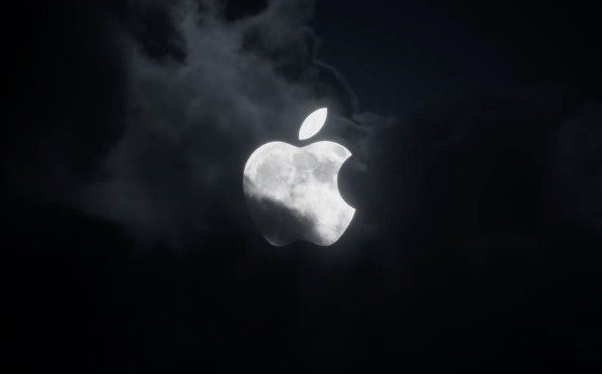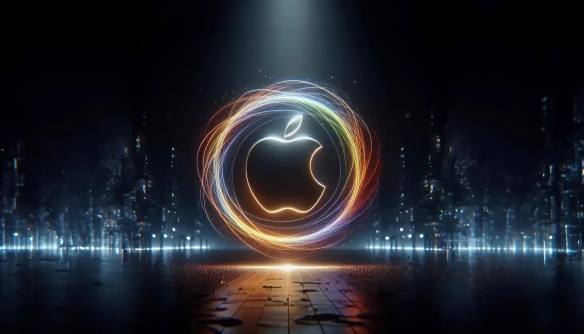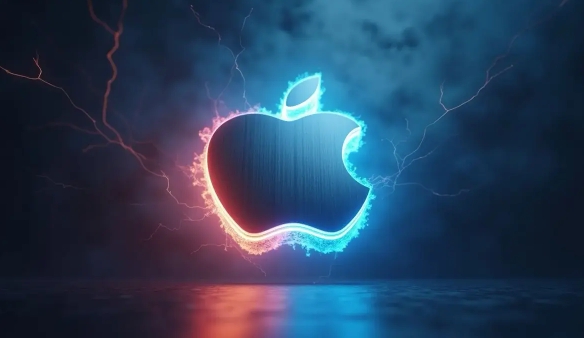Installing macOS to Dell laptops is feasible but requires hands-on ability. 1. Prepare supported Dell laptops, USB drives, macOS environments and EFI files; 2. Use OpenCore or UniBeast to create a boot disk and adjust the BIOS settings; 3. Handle driver problems such as graphics cards, network cards, etc. when installing the system; 4. Use configuration tools to optimize EFI to repair power management; 5. Pay attention to system update compatibility during daily maintenance and use the community to solve problems.

Installing macOS to a Dell notebook is not as far away as you think, but it is indeed not the official path to support it. Due to Apple's hardware restrictions on macOS, this falls within the category of "Black Apple". If you just want to experience macOS or use it for development and testing, this method is feasible, but requires a certain amount of hands-on ability and patience.

Here are some key steps and precautions to help you complete the installation process more smoothly.

Prepare the necessary tools and resources
Before you start, make sure you have the following things ready:
- A supported Dell notebook (preferably Intel processor, AMD's support is weak)
- USB drive (at least 16GB, used to make boot disk)
- A computer that is already running macOS or can run a macOS virtual machine (used to create a boot USB drive)
- EFI configuration files provided by the Black Apple community (such as those provided by RehabMan and Dortania)
- macOS installation image (macOS Catalina or Big Sur is relatively stable)
You can find the EFI file for the corresponding model through the GitHub or Hackintosh community. Some popular models (such as XPS 15, Latitude, Vostro, etc.) already have ready-made configurations.

MacOS boot USB drive
This is the most basic and critical step in the whole process. The specific operations are as follows:
- Use tools such as macOS OpenCore or UniBeast to create a bootable installation USB drive
- Put the downloaded EFI file into the EFI partition of the USB disk
- Make sure the BIOS is set correctly: Turn off Secure Boot, enable CSM (compatibility support module), and set the USB drive as the first boot item
Note: The BIOS interfaces of different Dell models are slightly different. It is recommended to check the BIOS setup tutorial for your laptop model in advance.
Install macOS and configure drivers
After inserting the USB drive, restart the computer and enter the installation interface. The following problems may be encountered during the installation process:
- The graphics card driver is not recognized : need to be patched manually or use the configured EFI file
- Network card/sound card/touchpad cannot be used : Many Dell models of network cards are not natively supported by Apple, and additional drivers are required (kext files)
- Sleep/Wake exception : Some models need to modify the DSDT or SSDT table to fix power management issues
It is recommended to use tools such as Clover Configurator or OpenCore Configurator to fine-tune the EFI configuration after the installation is complete.
Daily use and update maintenance
Once the system can be up and running normally, the following is the adaptation problem for daily use:
- Be extra careful when updating macOS versions, as new versions may break existing driver configurations
- Not all software works perfectly, especially applications that rely on GPU acceleration
- You can consider dual system installation to facilitate switching back to Windows using specific software
Some common problems can be solved through community forums, such as InsanelyMac or Reddit's r/hackintosh . Searching for your model's problem keywords can usually find solutions.
Basically that's it. Although the process is a bit cumbersome, as long as you follow the tutorial step by step, most Dell laptops can successfully run macOS. The difficulty lies in debugging drivers and stability optimization, and it is recommended that users with basic skills try it.
The above is the detailed content of How to install macOS on a Dell laptop?. For more information, please follow other related articles on the PHP Chinese website!

Hot AI Tools

Undress AI Tool
Undress images for free

Undresser.AI Undress
AI-powered app for creating realistic nude photos

AI Clothes Remover
Online AI tool for removing clothes from photos.

Clothoff.io
AI clothes remover

Video Face Swap
Swap faces in any video effortlessly with our completely free AI face swap tool!

Hot Article

Hot Tools

Notepad++7.3.1
Easy-to-use and free code editor

SublimeText3 Chinese version
Chinese version, very easy to use

Zend Studio 13.0.1
Powerful PHP integrated development environment

Dreamweaver CS6
Visual web development tools

SublimeText3 Mac version
God-level code editing software (SublimeText3)

Hot Topics
 Where is the pycharm interpreter?
May 23, 2025 pm 10:09 PM
Where is the pycharm interpreter?
May 23, 2025 pm 10:09 PM
Setting the location of the interpreter in PyCharm can be achieved through the following steps: 1. Open PyCharm, click the "File" menu, and select "Settings" or "Preferences". 2. Find and click "Project:[Your Project Name]" and select "PythonInterpreter". 3. Click "AddInterpreter", select "SystemInterpreter", browse to the Python installation directory, select the Python executable file, and click "OK". When setting up the interpreter, you need to pay attention to path correctness, version compatibility and the use of the virtual environment to ensure the smooth operation of the project.
 The difference between programming in Java and other languages ??Analysis of the advantages of cross-platform features of Java
May 20, 2025 pm 08:21 PM
The difference between programming in Java and other languages ??Analysis of the advantages of cross-platform features of Java
May 20, 2025 pm 08:21 PM
The main difference between Java and other programming languages ??is its cross-platform feature of "writing at once, running everywhere". 1. The syntax of Java is close to C, but it removes pointer operations that are prone to errors, making it suitable for large enterprise applications. 2. Compared with Python, Java has more advantages in performance and large-scale data processing. The cross-platform advantage of Java stems from the Java virtual machine (JVM), which can run the same bytecode on different platforms, simplifying development and deployment, but be careful to avoid using platform-specific APIs to maintain cross-platformity.
 How to stop Microsoft Edge automatic updates
May 21, 2025 am 10:12 AM
How to stop Microsoft Edge automatic updates
May 21, 2025 am 10:12 AM
How to stop Microsoft Edge Automatically Update Microsoft Edge is the default browser that comes with Windows 11. Earlier, the Edge browser received updates as the Windows operating system was updated. However, the Edge browser based on Chromium has changed that. The browser will now automatically update in the background without your knowledge. In this article, we will explain how to stop automatic Microsoft Edge updates in Windows 11 and macOS. Related: How to disable automatic updates in Google Chrome? Check for automatic edge updates Chromium-based Edge vs. Goo based on Chromium backend code
 Commands and configurations for starting Apache service in macOS system
May 16, 2025 pm 10:00 PM
Commands and configurations for starting Apache service in macOS system
May 16, 2025 pm 10:00 PM
The command to start the Apache service on macOS is sudoapachectlstart, and the configuration file is located in /etc/apache2/. The main steps include: 1. Edit the httpd.conf file, modify the Listen port such as Listen8080; 2. Adjust the DocumentRoot path to the personal directory such as /Users/your_username/Sites, and update the corresponding permission settings; 3. Use the sudoapachectlgraceful command to restart Apache to ensure that the configuration takes effect; 4. Enable the mod_deflate module to compress data to improve page loading speed.
 MySQL installation tutorial teach you step by step the detailed steps for installing and configuration of mySQL step by step
May 23, 2025 am 06:09 AM
MySQL installation tutorial teach you step by step the detailed steps for installing and configuration of mySQL step by step
May 23, 2025 am 06:09 AM
The installation and configuration of MySQL can be completed through the following steps: 1. Download the installation package suitable for the operating system from the official website. 2. Run the installer, select the "Developer Default" option and set the root user password. 3. After installation, configure environment variables to ensure that the bin directory of MySQL is in PATH. 4. When creating a user, follow the principle of minimum permissions and set a strong password. 5. Adjust the innodb_buffer_pool_size and max_connections parameters when optimizing performance. 6. Back up the database regularly and optimize query statements to improve performance.
 Which is better, uc browser or qq browser? In-depth comparison and evaluation of uc and qq browsers
May 22, 2025 pm 08:33 PM
Which is better, uc browser or qq browser? In-depth comparison and evaluation of uc and qq browsers
May 22, 2025 pm 08:33 PM
Choosing UC browser or QQ browser depends on your needs: 1. UC browser is suitable for users who pursue fast loading and rich entertainment functions; 2. QQ browser is suitable for users who need stability and seamless connection with Tencent products.
 How to update the system's own software
May 19, 2025 pm 06:48 PM
How to update the system's own software
May 19, 2025 pm 06:48 PM
Updating the software that comes with macOS is simple and important because it can fix bugs, improve performance, bring new features and security improvements. You can update through the "Software Update" option in "System Settings" or "System Preferences" and follow the prompts. If you encounter problems, try restarting your Mac or checking your network connection, and the Apple Support page also provides a solution. It is recommended to keep the system up to date, back up data before update, and ensure Wi-Fi and sufficient storage space. Update details can be viewed on Apple's official website.
 How to adjust screen brightness on macOS
May 16, 2025 pm 08:39 PM
How to adjust screen brightness on macOS
May 16, 2025 pm 08:39 PM
Adjusting screen brightness on macOS can be fine-tuned using the brightness adjustment keys on the keyboard or through system preferences. 1. Press the Sun icon keys on the F1 and F2 keys to quickly adjust the brightness. 2. Drag the slider in the "Display" option in "System Preferences" to make minor adjustments. 3. Enable the "Auto-adjust brightness" function to make the brightness change with the ambient light. 4. Use the "Night View" mode to reduce blue light to protect your eyes. 5. Developers can use AppleScript to automate brightness adjustments.






